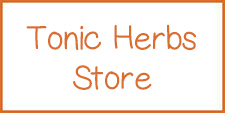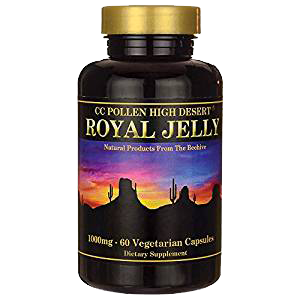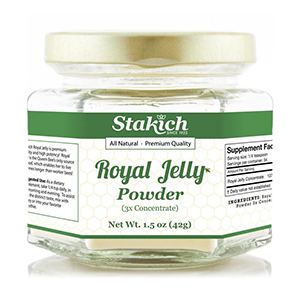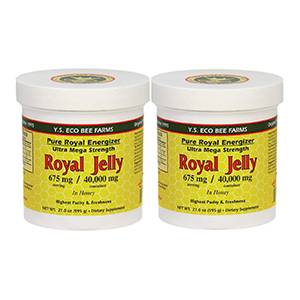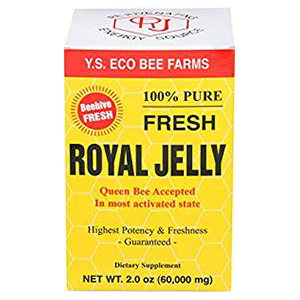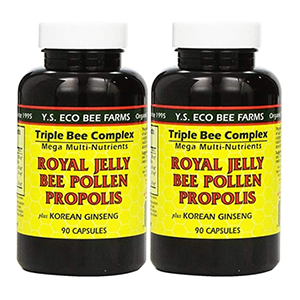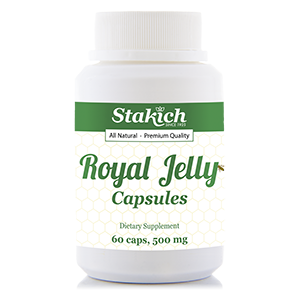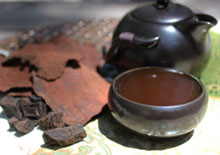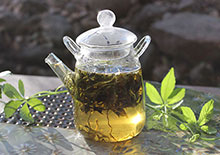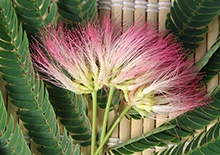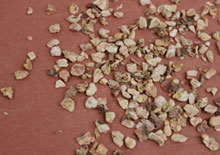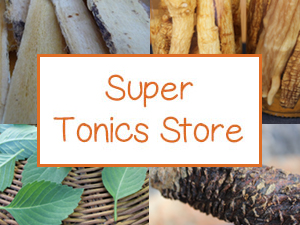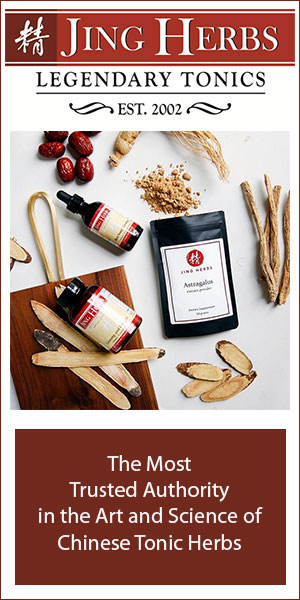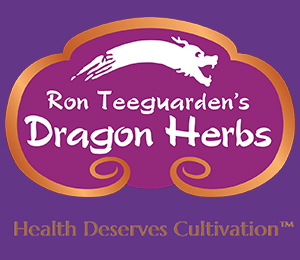- Home
- Chinese Herbs
- Royal Jelly
Benefits of Royal Jelly, Is It Really a Top Superfood?
Intro | What is Royal Jelly? | How It's Collected | Claimed Benefits | Nutritive Composition | Chinese Herbalism | Good Superfood Option? | Types | How to Use | Precautions | Shop
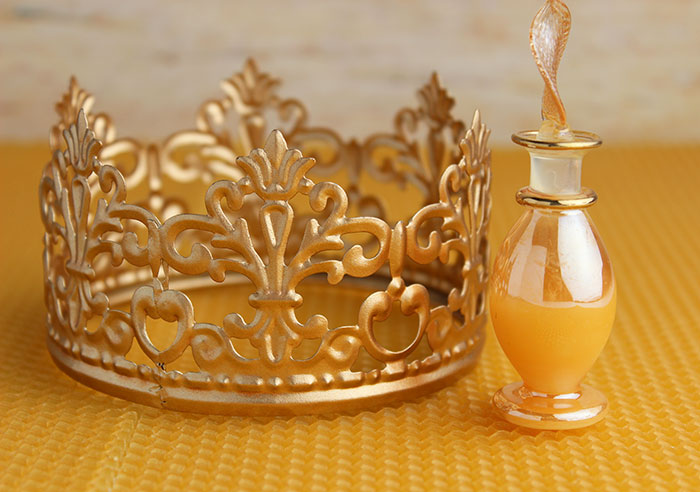
Royal jelly is a creamy pale-yellow substance that is the nourishing food source created by bees to support the development, reproductive maturity and longevity of the queen bee.
This is the largest and longest living bee in the entire colony and the mother of most all bees in the honeybee hive.
It has been revered as a very nutritious supplement to humans particularly in locations around the world where apitherapy is common. This is the practice of using honeybee products, such as propolis, honey, bee pollen as well as royal jelly as a form of alternative medicine.
Table of Contents
Intro | What is Royal Jelly? | How It's Collected | Claimed Benefits | Nutritive Composition | Chinese Herbalism | Good Superfood Option? | Types | How to Use | Precautions | Shop
Utilized for its alleged nutritional and therapeutic properties, especially in regions of Egypt, China, Korea, Greece and Russia, it has been collected from hives and consumed predominantly after the invention of the man-made beehive.
Ever since the 1950's, the benefits of royal jelly have been widely marketed as a dietary supplement as well as used as an added special ingredient in commercial health food products.
It is a most popular and highly revered elixir in Chinese herbalism, typically infused with superior tonic herbs especially ginseng, which it is thought to help potentiate. It has been proposed to increase energy, promote rejuvenating qualities and encourage a lengthy lifespan. Today, China is the world’s largest producer and consumer of royal jelly.
While there is some scientific research to support these claims, there is still some controversy about whether royal jelly is indeed beneficial to humans in the same way it is to the honeybee queen? Here on this page, we will share our current findings plus our personal views about using royal jelly as a supplement to one's diet.
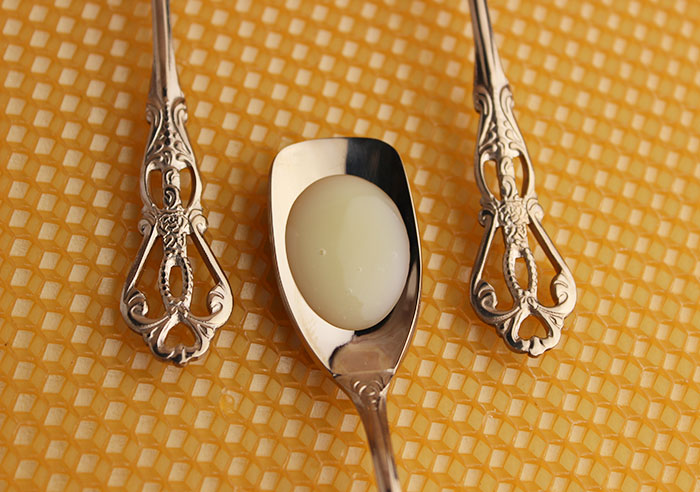
What is Royal Jelly?
Royal jelly is a special substance created by honeybee species in the genus Apis. These are types of bees, like Apis mellifera or the western honeybee, specifically known for their production and storage of honey.
The bee-made jelly is a milky colored protein-rich liquid secreted from the heads of young nurse worker bees. It is fed to all baby bee larvae in the honeybee colony during the first 3 days of growth to give them a nutrient boost to promote further development.
It is however the exclusive food reserve amply fed to the queen bee, the single fertile female of the hive whose main function is to serve as the reproducer of eggs for the expansion of the colony. The term "royal" describes its primary use for such purposes.
Larvae chosen to become a queen are fed large amounts of royal jelly which triggers biological processes responsible for their larger size, reproductive capacity and much longer lifespan. The average queen can live for about three to five years, whilst worker bees only live for a few weeks to several months, depending on the season.
Royal jelly is not only the sole source of nourishment for the queen when growing within the jelly-filled "queen cell", she continues to consume it exclusively during her entire life.
Royal Jelly as a Dietary Supplement
Royal jelly as a supplement for human consumption is available in its fresh state, freeze-dried, infused into honey or sold in liquid vials. We've tasted the actual fresh pure variety as well as straight freeze-dried powders and it has a sour somewhat bitter flavor and isn't very sweet like one might expect.
How is Royal Jelly Commercially Produced and Collected?
While royal jelly is a natural material produced in healthy honeybee hive populations, it is a precious substance only made in small quantities. Because larger amounts are needed as a dietary supplement, methods for achieving higher yields are an important part of commercial production.
It is therefore commonly manufactured by artificially stimulating man-made hives to produce queen bees. When the larvae are around four days old, after an excess of jelly is deposited within the honeycomb queen cells, it is carefully extracted from removable frames using special lab equipment and the larvae are destroyed.
Royal jelly is expensive for this reason, as it requires some precise timing, skill and must be kept cold to preserve nutritional content.
The large-scale commercial production of royal jelly, and bee
products in general, are not always considered vegan-friendly foods.
Beekeeping methods are in fact often viewed as an exploitative
animal-based practice or a form of animal domestication.
We in part agree that royal jelly harvesting is not exactly an ethical practice and does bring into question whether other superfoods could provide similar health benefits. This is definitely something you may wish to consider when deciding to use it for supplemental intake.
We personally believe there is great value in the art of small-scale holistic beekeeping and there has never been a more crucial time to help encourage flourishing bee populations and the integral role they play in the biodiversity of our ecosystems as well as our food supply. Is large-scale royal jelly collection good for honeybees in general? This is a decision you alone must make.

Claimed Benefits of Royal Jelly and Major Nutrients
Royal jelly, logically speaking, is going to contain high quantities of some essential nutrients as it is a concentrated material created to support not only the new life of a baby bee, but also provides the sole nourishment for the long-living and fertile queen of the hive. All bee larvae start out the same the only difference between the queen and other honeybees is the continued consumption of royal jelly.
It has therefore been popularized for its increased nutrition and marketed as an "anti-aging" and "fertility" supplement for human intake.
The list of potential nutrients is believed to include enzymes as well as many of the B vitamins such as thiamine, riboflavin, pantothenic acid, niacin, folic acid, pyridoxine, inositol and biotin. (*)
However, the main special health-enhancing nutritional components that may make it potential top superfood are thought to be its unique protein and fatty acid profile.
Main Nutritive Composition, Proteins and Fatty Acids
Royal jelly has been found in some research to contain certain proteins and fatty acids.
These include:
- MRJPs
- 10-H2DA
Major Royal Jelly Proteins (MRJPs)
The proteins in jelly-produced bee secretions are called MRJPs, short for "Major Royal Jelly Proteins". They are a group of proteins that include MRJP1, MRJP2, MRJP3, MRJP4, and MRJP5. Of these compounds, MRJP1, or royalactin, is the most abundant and believed to be one of the main medicinal constituents. (*)
Within the beehive colony, these proteins are thought to be responsible for the developmental social behavior and reproductive differences between the queen and worker larvae.
There has been some published 2018 data reporting that MRJPs might be harder to absorb in the human gastrointestinal tract, which would of course limit their uptake.
Royal Jelly Fatty Acids (10-H2DA)
The core fatty acid present in royal jelly and most researched is the "queen bee acid" known as 10-hydroxy-2-decanoic acid or 10-H2DA, followed by its minor saturated equal, lO-hydroxydecanoic acid. (*) These compounds remain exclusive to this honeybee secretion.
The 10-hydroxy-2-decanoic acid has been identified in research to have strong anti-inflammatory effects on tests performed in vitro, not on live human subjects.

Views About Royal Jelly in Chinese Herbalism
Royal jelly goes by the Chinese name feng wang and is regarded as a superior nutrient-rich substance that is often classified alongside other major tonic herbs. However, the use of royal jelly according to authors like Ron Teeguarden "is not a traditional Chinese tonic herb" but only a recent discovery.
It is considered to be a Yin and Energy tonic, believed to be especially grounding and tonifying to "Spleen Chi". It is very popular for its pairing with one of the top famous herbs in TCM, known as ginseng. Royal jelly and ginseng extract combinations are frequently sold together in small liquid vials usually containing other ingredients like water, honey and bee pollen. They are claimed to be energy elixirs designed to be taken throughout the day when a quick boost is needed.
Some brands also infuse it with ginseng into raw honey along with bee pollen and propolis.
The texture of royal jelly is not as thick as honey because it contains more water content. It is, however, quite sticky with a milky off-white color often likened to reproductive fluids as it has a semen-like quality.
Likewise, because of its main effects at creating the healthy and very fertile queen bee who lays all eggs of the beehive, it is often associated with its potential to promote fertility, especially in women. While it is alleged to do this in part by modulating sex hormones, there is currently not enough human-based evidence to support this claim.
As a type of "Yin" tonic, it can be replenishing to depleted Jing energy and is traditionally known to be building to those with weak constitutions. It is also regarded to support healthy immune function and in some studies was shown to be of benefit to postmenopausal women.
Herbalist Rosemary Gladstar in her book "Herbal Healing for Women" uses royal jelly in her "crone candy" recipe along with other nourishing herbs appropriate for menopause.
The benefits of royal jelly are likewise known for their famous reputation as a skin and beauty enhancer and often used with other tonic herbs in formulations, particularly for females. It is similarly applied in the cosmetic industry as an added nutritive ingredient designed for topical use.
Is Royal Jelly a Good Superfood Option?
The benefits of royal jelly have long been utilized as a nutritional supplement for its claimed ability to nourish humans the same way it does the queen bee. There has in fact been some research conducted in one human randomized placebo-controlled, double-blind trial showing some favorable effects, but otherwise scientific evidence is currently limited.
In our opinion, however, three logical points to keep in mind are:
1) Smaller Quantity - The quantity consumed by the queen bee can't really be adequately compared to humans use as a dietary supplement.
2) Sole Food Source - The queen bee exclusively feeds on royal jelly her entire life. Humans don't have this advantage.
3) Limited Shelf-Life - Royal jelly is a highly perishable material that is intended to be utilized immediately as a food source, not artificially extracted, stored or freeze-dried.
Because of the lack of substantial human-based evidence on health benefits of royal jelly as well as its exploitative commercial production methods, it wouldn’t necessarily be first on our list as a superfood option.
Benefits of Royal Jelly, Our Personal Experimentation
In our attempt to offer a well-rounded viewpoint, we did do some personal experimentation with taking daily doses (between 500-1000 mg 3 times a day) using both fresh and freeze-dried powders. Results did not seem to have long lasting effects, but a relatively short-lived quick boost of energy was sometimes observed. Perhaps longer use beyond a 2-week period would provide cumulative effects or larger amounts might likewise be required.
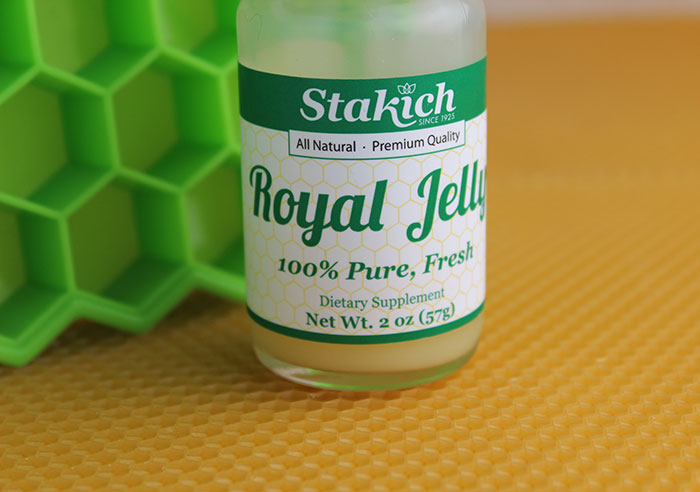
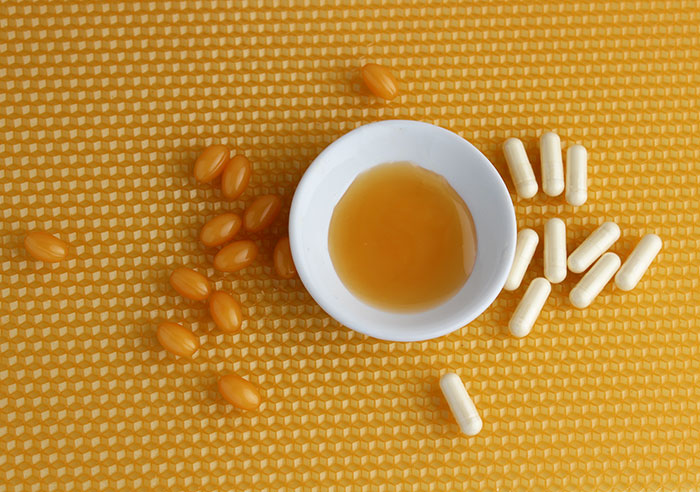
Types of Royal Jelly
1) Pure Royal Jelly - This is the straight whole jelly-like substance and requires cold storage to preserve nutritional value. It is refrigerated or frozen and can be delivered with ice packs when ordered by mail.
2) Freeze-Dried Royal Jelly - Freeze-dried powders are created to concentrate nutrients and provide an easy way to consume it in tablets, capsules or gel-cap format. It is also frequently available as a loose bulk powder that often comes with a measuring device to ensure adequate intake.
3) Royal Jelly Honey - Another way to preserve the jelly is by blending it with honey and other bee products like propolis and bee pollen. In the U.S., this variety is the most common in most natural food stores.
4) Royal Jelly Vials - Small liquid vials are also traditional ways to consumed it, especially in China. They usually are a blend of water, royal jelly, honey and sometimes bee pollen. They are typically blended with other tonic extracts, most commonly ginseng, and marketed as a quick energy boosting supplement. Often, they are of a lower quality than other forms.
5) Royal Jelly Ingredient - It is frequently utilized as a supplementary ingredient in skincare products and cosmetics because of its alleged anti-aging associated benefits. It is also widely used in many health food products and beverages.
How to Use
Typically 1/4 teaspoon of fresh royal jelly is often considered a good dose amount. This has been shown to equate to about 1,375 mg/serving on some product labels. It is best to either take it straight or mix it into water as it is can degrade quickly. Always store pure jelly in the refrigerator or freezer for longer periods.
Freeze-dried powders and supplements are slightly more convenient as they are shelf-stable and can be stored at room temperature.
For freeze-dried varieties, follow the directions for the specific brand as doses may vary between 150mg to 600mg per capsule or tablet. Loose bulk powders are best measured out according to instructions on product labels.
Royal jelly liquid vials are available, but frequently they can be of a lower quality and are usually watered down with other ingredients.
Precautions:
Avoid consuming royal jelly if you have asthma and/or allergies to bee products. Consult your physician, before taking royal jelly, if you are pregnant, nursing, taking prescription medications or have a serious medical condition.
Shop Related Products (About Affiliates & Amazon Associate Paid Links)
Affiliate Disclaimer: This section contains affiliate product links. If you make a purchase through our recommended links, we receive a small commission at no additional cost to you. Thanks for the support.
